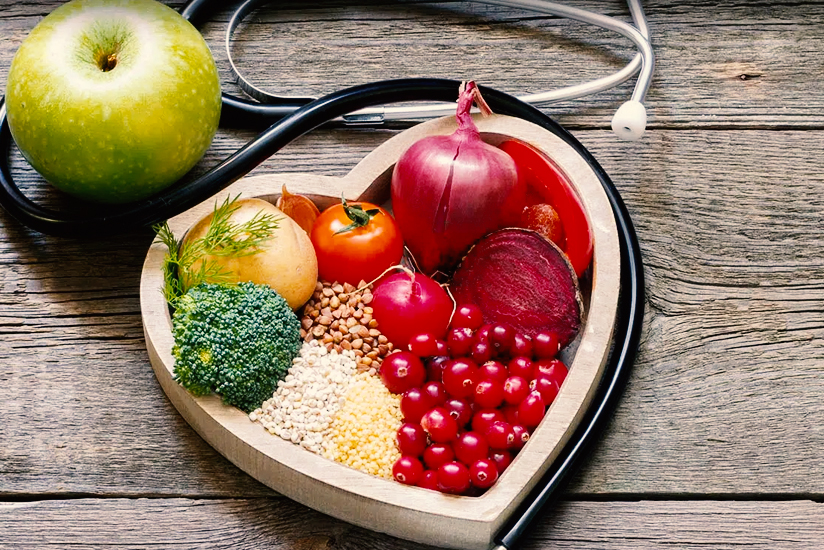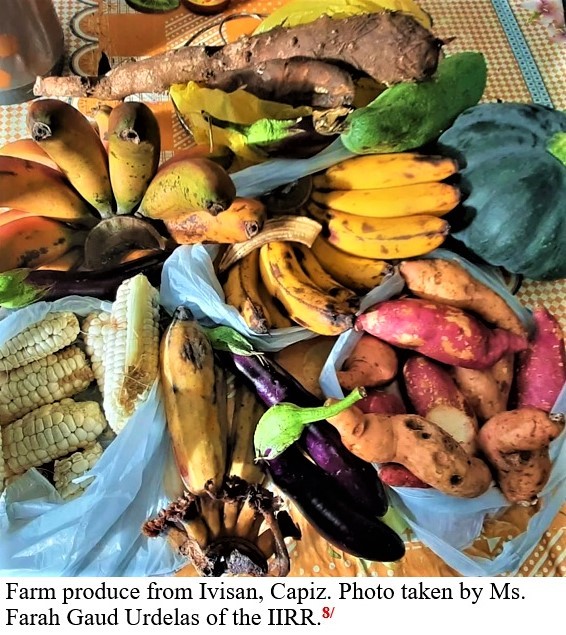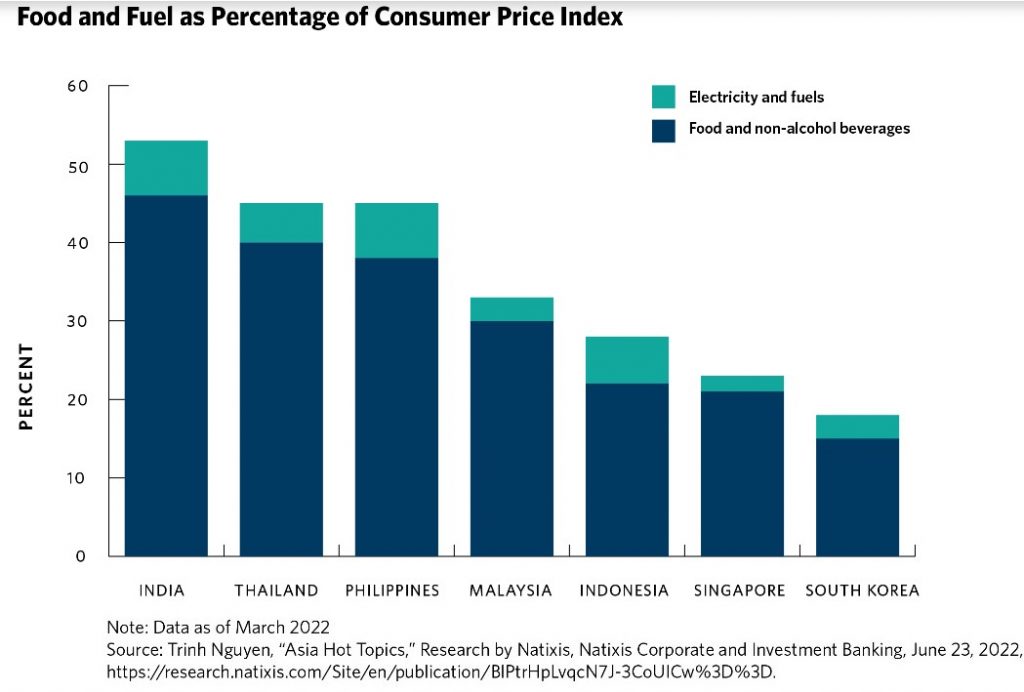By Virgilio C. Ventura
The importance of food and good nutrition is common knowledge in healthcare but is also frequently challenged by prevailing socioeconomic limitations. The goal of this article is to present various perspectives not only on the purpose of good dietary values in the food that we eat, but also on the circumstances that motivate/demotivate us to change our eating habits to live a healthier lifestyle.

Within the larger umbrella of preventive medicine, the concept of lifestyle medicine highlights also the truism of food as medicine in improving human health condition. Proper nutrition, of course, is simply one among the “modalities fundamental to lifestyle medicine that includes physical activity, weight management, and cigarette smoking cessation.”1/ Foods for Special Medical Purposes (FSMPs) as it is known in the European Union (EU) or medical foods in the US or as Codex Alimentarius in most countries in the world, “are defined broadly as a category of foods that are especially processed or formulated and presented for patients’ dietary management and used only under the medical supervision”.2/
Food as medicine as a critical component of lifestyle medicine is an “evidence-based practice of assisting individuals and their families to adopt and sustain behaviors that can improve health and quality of life”. It likewise highlights the critical role of medical professionals such as physicians and dietary nutritionists in treating patients often affected by chronic metabolic diseases such as diabetes, hypertension, hyperlipidemia, obesity, atherosclerotic cardiovascular disease, and cancer.3/
However, registered dietician nutritionist Carries Dennett slightly differs in her take on the focus on food as medicine as she opines that: “It’s not that nutrition doesn’t matter for health, but far too much emphasis is placed on personal responsibility, given that what determines our health is multifactorial. If you were to imagine these factors in a pie chart, social and economic factors accounts for about 40%, our genes/biology, physical environment and the quality of health care we receive account for about 10% each, and our personal health behaviors account for about 30%. And that 30% chunk? It includes nutrition as well as physical activity, sleep, stress, preventive health care, risky behaviors (unsafe sex, failure to wear seat belts), smoking status, and alcohol and drug use.”4/
Sadly, the global and national situation on food insecurity remain perilous for humanity. Access to healthy food has now become a global problem as aggravated by the incidence of wars, bad governance, and the Covid-19 pandemic. Despite the tremendous economic growth attained by the Philippines from 2010 to 2017, the specter of famine, malnutrition, and undernutrition continues to haunt the Filipino nation. “Based on The Economist’s 2021 Global Food Security Index (GFSI), the Philippines ranked 64th out of 113 countries in terms of its four dimensions of food security such food availability, food accessibility, food utilization, and stability.”5/ In September 2021, the Philippine social research institution Social Weather Stations (SWS) estimated that 2.5 million Filipino families have experienced involuntary hunger due to lack of food to eat – at least once in the past three months.6/ Moreover, based on the Global Hunger Index, the country is ranked 68th out of 116 countries surveyed in terms of hunger level which could further be exacerbated by climate change patterns and evolving pandemic. Food security has indeed been the focus of international support coming from such long-time friends like Japan through the Project for Market-Driven Enhancement for Vegetable Value Chain in the Philippines (MV2C-TCP) of the Japan International Cooperation Agency (JICA). This “five-year initiative will be piloted in major production areas for highland and lowland vegetables. One of the project’s outcomes is the vegetable value chain roadmap outlining challenges, solutions, and stakeholder roles seen to benefit all of vegetable-producing regions in the country”.7/

Concern over the quality of food has also been echoed in a recent webinar sponsored by the Philippine Institute for Development Studies (PIDS) on the country’s quality of health care and nutrition in public hospitals. Nutritionist-dietician Lyle Daryll Casas expressed the imperative on the need of these hospitals for more resources to deliver quality nutrition to achieve in-patients’ recovery.
“Poor dietary intake for inpatients resulting in malnutrition can lead to longer recovery time and higher risk of complications, which can worsen a patient’s health,” Casas explained during his presentation of the results of a PIDS study of 193 public hospitals, including DOH-retained and LGU-owned hospitals, and their compliance with the prescribed standards set by the Nutrition and Dietetics Service (NDS).9/
The perilous Philippine situation is also shown by the study of Trinh Nguyen (2022) where realistic and people-oriented food security policy is almost non-existent. Indeed, access to healthy food remains a challenge for many low-income households in the margins of Philippine society.

“The Philippines is the most food-insecure country in emerging Asia due to its reliance on imported food to feed its expanding population, and Marcos’ self-appointment is a worrisome sign for his country’s food self-sufficiency amid a looming crisis.”10/
It is thus with much faith that the Filipino people should be served well by its newly chosen government with concrete food policy solutions to ward off not only imminent hunger but death as well. Understanding the concept of food as medicine should go beyond what could be possible in healthcare but to craft policy measures that can be implemented to serve the health concerns of the poorest of the poor in Philippine society. END
NOTES
- Rippe J. M. (2018). Lifestyle Medicine: The Health Promoting Power of Daily Habits and Practices. American journal of lifestyle medicine, 12(6), 499–512. https://doi.org/10.1177/1559827618785554
- Ruthsatz, M., Chen, J., Wu, C., & Morck, T. (2022). Foods for special medical purposes/ medical foods: A global regulatory synopsis. Regulatory Focus. https://www.raps.org/RAPS/media/news-images/Feature%20PDF%20Files/22-8_Ruthsatz-et-al_r2_final.pdf
- 3.1. Philippine College of Lifestyle Medicine, Lifestyle Medicine Competency Course Module 1, https://www.pclm-inc.org/module-1—lmc- course.html 3.2. Miller, Daphne. (2008). The Jungle Effect: The Healthiest Diets from the Around the World: Why They Work and How to Make Them Work for You. New York, NY: HarperCollins Publishers.
- Carrie Dennett, Is it correct to think of food as medicine? Not exactly, The Seattle Times, April 18, 2022. https://www.seattletimes.com/life/wellness/is-it-correct-to-think-of-food-as-medicine-not-exactly/
- Ivory Meka R. Galang, Is Food Supply Accessible, Affordable, and Stable? The State of Food Security in the Philippines, PIDS, June 30, 2022. https://www.pids.gov.ph/publication/discussion-papers/is-food-supply-accessible-affordable-and-stable-the-state-of-food-security-in-the-philippines.
- Social Weather Stations, Third Quarter 2021 Social Weather Survey: Hunger falls to 10.0% of families in September 2021, December 6, 2021. https://www.sws.org.ph/swsmain/artcldisppage/?artcsyscode=ART-20211206105401
- Project to address food security issues in PH via improvement of vegetable value chain begins, JICA, January 21, 2022. https://www.jica.go.jp/philippine/english/office/topics/news/220121_02.html
- Special thanks to Farah Gaud Urdelas (program manager at the International Institute of Rural Reconstruction (IIRR) for the photo.
- More resources to deliver quality nutrition care among public hospitals in PH urged, PIDS, July 5, 2022. https://www.pids.gov.ph/details/news/press-releases/more-resources-to-deliver-quality-nutrition-care-among-public-hospitals-in-ph-urged
- Trinh Nguyen, Why the Philippines is so vulnerable to food inflation, Carnegie Endowment for International Peace, July 13, 2022. https://carnegieendowment.org/2022/07/13/why-philippines-is-so-vulnerable-to-food-inflation-pub-87467#:~:text=The%20Philippines%20is%20the%20most,sufficiency %20amid%20a%20looming%20crisis.








